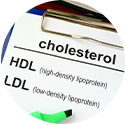Doctors from Emory University have made an exciting find in their research concerning Alpha-lipoic acid and aging.

In human cells, shortened telomeres, the protective caps at the ends of chromosomes, are both a sign of aging and contribute to it. Scientists at Emory University School of Medicine have found that the dietary supplement alpha lipoic acid (ALA) can stimulate telomerase, the enzyme that lengthens telomeres, with positive effects in a mouse model of atherosclerosis.
What does this mean?
The discovery highlights a potential avenue for the treatment for chronic diseases.
“Alpha-lipoic acid has an essential role in mitochondria, the energy-generating elements of the cell,” says senior author Wayne Alexander, MD, PhD, professor of medicine at Emory University School of Medicine.
“It is widely available and has been called a ‘natural antioxidant’. Yet ALA’s effects in human clinical studies have been a mixed bag.”
ALA appears to exert its effects against atherosclerosis by spurring the smooth muscle cells that surround blood vessels to make PGC1 (peroxisome proliferator-activated receptor gamma co-activator 1)-alpha.
PGC1-alpha was already well known to scientists as controlling several aspects of how skeletal muscles respond to exercise. While the Emory researchers did not directly assess the effects of exercise in their experiments, their findings provide molecular clues to how exercise might slow the effects of aging or chronic disease in some cell types.
“The effects of chronic diseases such as atherosclerosis and diabetes on blood vessels can be traced back to telomere shortening,” Alexander says. “This means that treatments that can restore healthy telomeres have great potential.”
Consistent with the poorer state of their blood vessels, aortic cells from PGC1-alpha-disrupted mice had shorter telomeres and reduced telomerase activity. Having shortened telomeres led the smooth muscle cells to display more oxidative stress and damage to the rest of their DNA.
The authors show that introducing PGC1-alpha back into vascular smooth muscle cells lacking that gene with a gene-therapy adenovirus could restore telomerase activity and lengthen the cells’ telomeres.
Telomerase is off in most healthy cell types and only becomes turned on when cells proliferate. Because telomerase is active in cancer cells and enables their continued growth, researchers have been concerned that stimulating telomerase in all cells might encourage cancer growth or have other adverse effects.
Previously we reported that Alpha Lipoic Acid and Omega-3 may be effective is condition of diabetic neuropathy.
Approximately 50 percent of patients with diabetes suffer from nerve damage, or neuropathy. No cure exists, and the most effective treatment, keeping blood sugar in control, only slows neuropathy. A study in the Journal of Neurophysiology, however, introduces a new alternative, omega-3 fatty acids found in fish oil.
The study shows that fish oil supplements can restore the condition of nerves damaged from diabetes in mice.
“Diabetic neuropathy is a very costly and debilitating complication of diabetes. It is the leading cause of foot ulcers and nontrauma-related amputations, and the impact of diabetic neuropathy on the patient and family are unmeasurable,” said Mark Yorek of the VA Medical Center in Iowa City, the study’s lead investigator.
Fish oil is an attractive treatment approach because “supplements are considered very safe and could be easily translated into everyday care. Fish oil would be easy to take, like a vitamin, and should have few side effects when combined with other medications,” explained Yorek.
In supportive research, doctors writing in the medical journal Nutrition, pointed out that “Alpha-lipoic acid (LA) and its reduced form, dihydrolipoic acid, are powerful antioxidants.” And that, “Available data strongly suggest that Alpha-lipoic acid, because of its antioxidant properties, is particularly suited to the prevention and/or treatment of diabetic complications.
They also noted that “Alpha-lipoic acid (LA) improves glucose disposal in patients with type II diabetes. In experimental and clinical studies, LA markedly reduced the symptoms of diabetic pathologies, including cataract formation, vascular damage, and polyneuropathy” (1).
In other research, scientists noted: “Lipid peroxidation (cellular damage) of nerve membranes has been suggested as a mechanism by which peripheral nerve ischemia and hypoxia (when oxygen concentrations fall below the level necessary to sustain cell life) could cause neuropathy. Lipoic acid (LA) is a powerful inhibitor of (cellular damage)… The treatment of diabetic peripheral and cardiac autonomic neuropathy with Alpha-lipoic acid is based on good clinical and experimental evidence.” (2)
At the Magaziner Center for Wellness, we look at each and every patient’s unique biochemistry by testing blood and urine, as well as identifying any vitamin and nutrient deficiencies and/or food allergies or sensitivities.
In many cases, our first line of defense in helping treat patients with diabetes is a healthy weight loss program. We work with patients to help them achieve their ideal body weight – either through dietary modifications, or, often, through more aggressive approaches that help patients take the weight off more quickly, including medically-based diets that utilize naturally-occurring hormones that stimulate metabolism, suppress appetite and mobilize fat.
Diabetes is an inflammatory process so one of the best approaches to managing the disease is following an anti-inflammatory diet rich in fruits, vegetables, legumes, unrefined and unprocessed grains – plant foods that are rich in fiber, which is beneficial for helping control blood sugar levels. Essentially, we advise our patients to eat foods that are slowly metabolized – often called low glycemic index foods. For example, we have found that certain plant foods like Brewer’s Yeast, broccoli and other related greens, okra, peas, Fenugreek seeds and sage have helped our patients with Type 2 diabetes manage their condition.
In cases where it is identified that the diabetes has already resulted in inflammatory disease that has affected cardiovascular function, we will often recommend chelation therapy, which involves the intravenous infusions of EDTA (a synthetic amino acid) to help remove heavy metals that may increase the production of free radicals that could further damage the tissues of the heart and perhaps contribute to poorly functioning arteries.
Lastly, we use hyperbaric oxygen therapy as a supplement to other treatments for patients who suffer from the painful numbness of diabetic neuropathy.
Questions?Ask us
1. Packer L, Kraemer K, Rimbach G. Molecular aspects of lipoic acid in the prevention of diabetes complications. Nutrition. 2001 Oct;17(10):888-95.
2. Androne L, Gavan NA, Veresiu IA, Orasan R. In vivo effect of lipoic acid on lipid peroxidation in patients with diabetic neuropathy. In Vivo. 2000 Mar-Apr;14(2):327-30




































Recent Comments